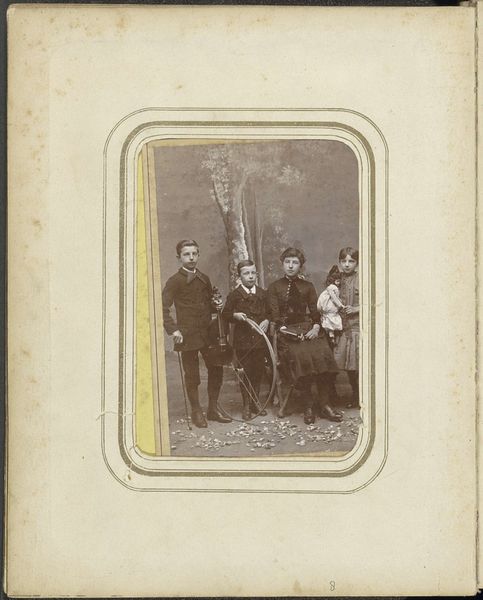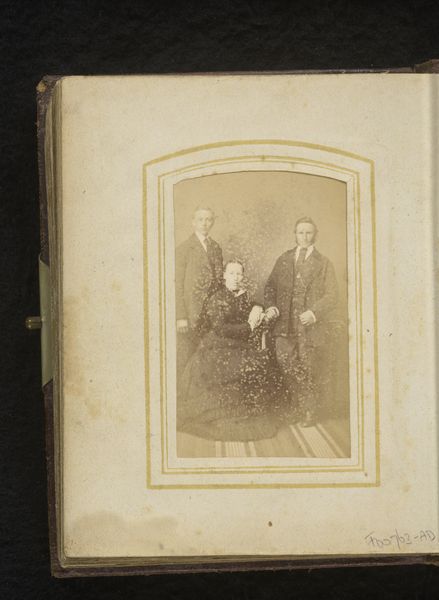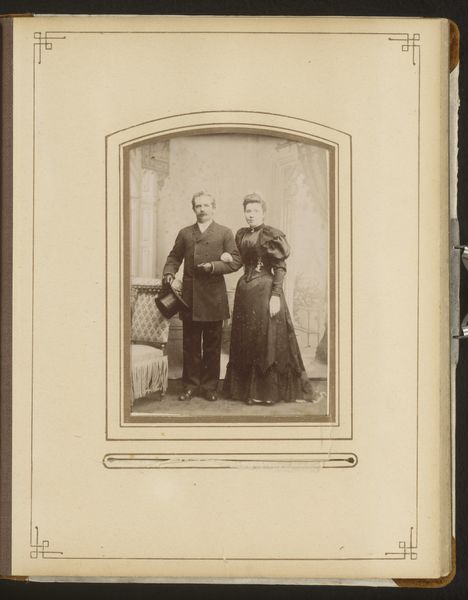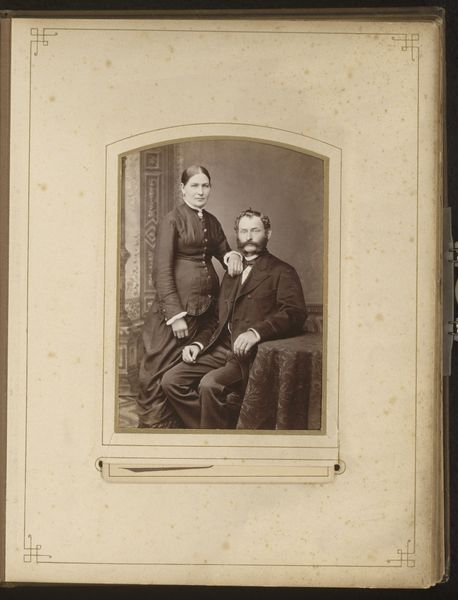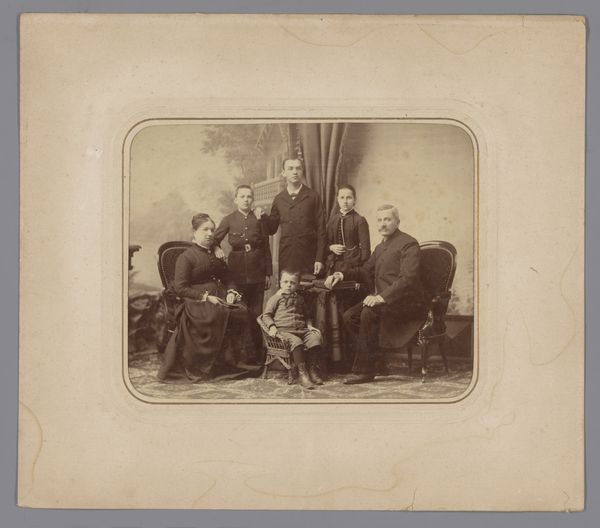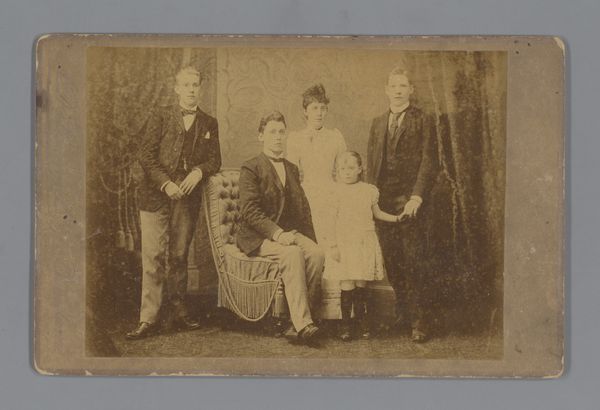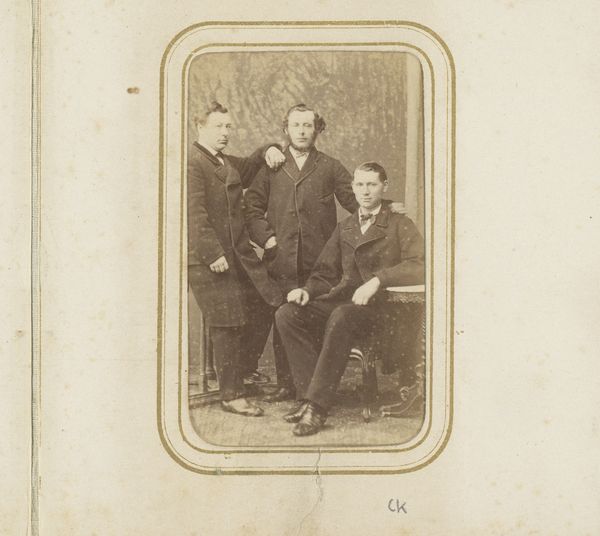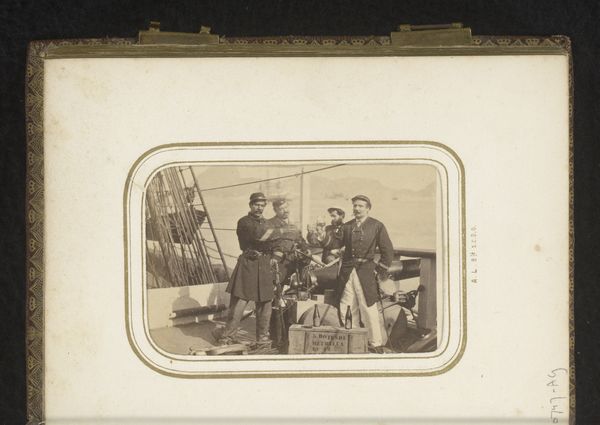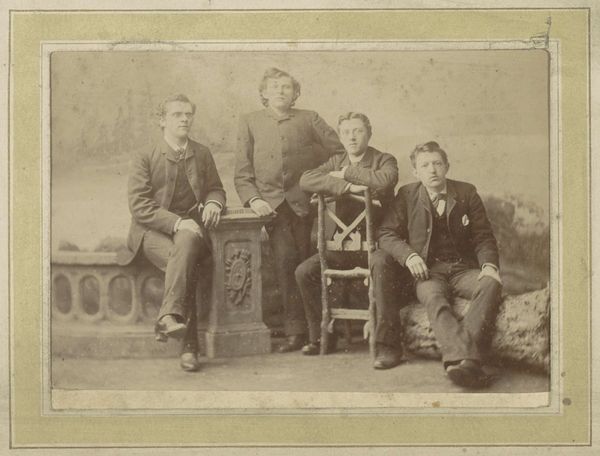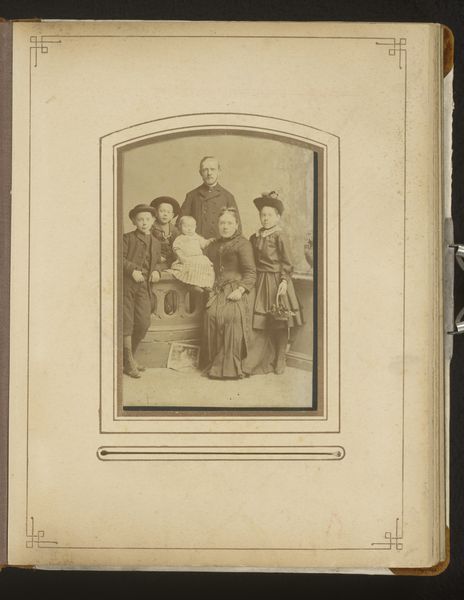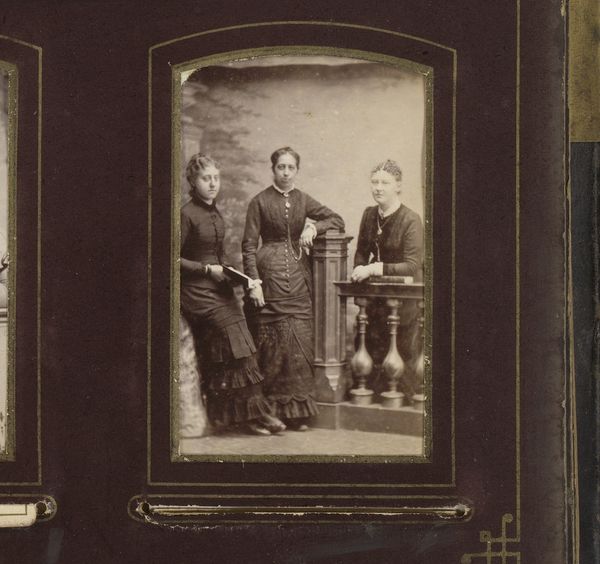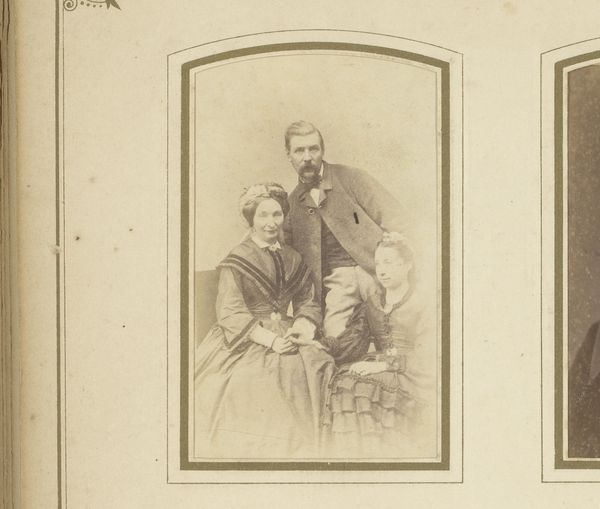
photography
#
portrait
#
photography
#
genre-painting
Dimensions: height 56 mm, width 92 mm, height 61 mm, width 104 mm
Copyright: Rijks Museum: Open Domain
Curator: Let's turn our attention to this photograph, "Drie mannen en een vrouw in een draagstoel in Ischl," by Victor Angerer, taken around 1865. What strikes you initially about this tableau? Editor: The tonal range, it's beautifully restrained. The composition emphasizes line and the subtle gradation from light to shadow creating a muted sense of dignity within the scene. It feels perfectly staged, perhaps self consciously so. Curator: The photograph presents us with an intriguing narrative, doesn't it? Look at the clear depiction of class and leisure during this time. The woman is carried by what appears to be working class men. This image can be a telling commentary on labor and gender dynamics. It also reveals elements of early tourism and staged exoticism. Editor: That is valid; however, notice how the strong horizontal lines of the 'dragstoel,' dissect the verticality of the standing men. There is a visual tension that undermines a simple reading. I'm also struck by the umbrella; a purely geometric device shielding the subject from the sun, thereby creating a microclimate and adding another subtle line. Curator: I think it's critical to analyze this from an intersectional viewpoint. The photograph is documenting a real-world power structure, where wealthy women of the leisure class benefit directly from labor inequality. Furthermore, gender constricts mobility; the woman must be carried, reasserting a need for dependence on these men. Editor: The repetition of shapes is just exquisite though. The men’s hats, that almost oval shade cast by the parasol. The entire composition resonates with such detail, down to the smallest pleat in the woman's skirt. What about the geometry and formalism inherent within the artwork itself? Curator: Yes, there are purely formal qualities to discuss, yet ignoring how these technical details contribute to reinforcing power would be to tell only a small part of the picture. Considering who can afford to create and commission art is very much linked to broader socio-political contexts. It affects our understanding on every level. Editor: I see what you mean. Through that framework, the photograph transcends its formal elements, pushing us toward deeper considerations about the context and construction of class identity. Curator: Precisely! We began to appreciate its rich complexity; it moves from mere representation toward commentary about life itself.
Comments
No comments
Be the first to comment and join the conversation on the ultimate creative platform.
